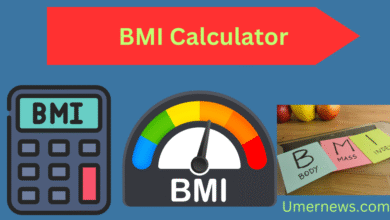Body Fat Calculator
Contents
- 1 🏋️ Advanced Body Fat Calculator
- 2 Body Fat Calculator: Your Guide to a Healthier You
- 2.1 Why Your Body Fat Percentage Matters More Than Just Weight
- 2.2 Interpreting Your Results: What’s a Healthy Range?
- 2.3 From Numbers to Action: What's Next?
- 2.4 Frequently Asked Questions
- 2.4.1 What is a healthy body fat percentage?
- 2.4.2 Is a body fat calculator accurate?
- 2.4.3 How do I lower my body fat percentage?
- 2.4.4 Is a BMI calculator the same as a body fat calculator?
- 2.4.5 Why is my body fat percentage high?
- 2.4.6 How often should I check my body fat?
- 2.4.7 Can I be thin but have a high body fat percentage?
- 2.5 Conclusion
Body Fat Calculator

🏋️ Advanced Body Fat Calculator
Get accurate body composition analysis with multiple measurement methods
📊 Your Body Composition Results
Interpretation
—
Body Fat Calculator: Your Guide to a Healthier You
Curious about what's really going on with your body? The number on the scale tells only part of the story. If you're serious about your health and fitness goals, it's time to look beyond pounds and kilograms and focus on your body composition. A body fat calculator is a powerful, simple tool that can help you do just that. This article will explain exactly how it works, what your results mean, and how you can use this information to create a more effective health plan.
Why Your Body Fat Percentage Matters More Than Just Weight
When you step on a scale, you're measuring your total body weight—this includes everything: muscle, bone, organs, water, and fat. While this number is a useful benchmark, it can be misleading. Two people can have the exact same weight, but one might have a high amount of muscle and low body fat, while the other has a high amount of body fat and less muscle.
Knowing your body fat percentage gives you a much clearer picture of your overall health and helps you track your progress more accurately. For example, if you're building muscle and losing fat, the number on the scale might not change much, but your body fat percentage will.
Understanding the Science Behind a Body Fat Calculator
Online body fat calculators are based on a few key variables to estimate your body composition. They often use established formulas that take into account factors such as:
- Age: Your metabolism and body composition naturally change as you get older.
- Gender: Men and women have different body fat distribution and essential fat percentages.
- Height and Weight: These are used to calculate your Body Mass Index (BMI), which is a key component in many estimation formulas.
- Measurements: Some more advanced calculators may ask for circumference measurements like your waist, hips, and neck.
These formulas provide a quick and convenient estimate, helping you get a baseline measurement without any specialized equipment.
Interpreting Your Results: What’s a Healthy Range?
Once you've used a body fat calculator, you'll get a single number representing your estimated body fat percentage. But what does that number mean? The ideal range varies by age and gender. Below are some general guidelines from the American Council on Exercise (ACE) to help you interpret your results.
| Category | Women | Men |
| Essential Fat | 10–13% | 2–5% |
| Athletes | 14–20% | 6–13% |
| Fitness | 21–24% | 14–17% |
| Average | 25–31% | 18–24% |
| Obese | 32% or higher | 25% or higher |
- Essential Fat: The minimum amount of fat your body needs to function properly.
- Athletes: Individuals with a high level of physical fitness and low body fat.
- Fitness: Individuals who are physically active and in good shape.
- Average: The typical range for a healthy individual.
- Obese: This range is associated with an increased risk of health issues.
Keep in mind that these are just general guidelines, and your personal ideal range may vary.
From Numbers to Action: What's Next?
Getting your body fat percentage is just the first step. The real value lies in what you do with that information. It helps you set more realistic and meaningful goals.
Here are a few steps you can take after using a body fat calculator:
- Set Realistic Goals: If your percentage is higher than you'd like, focus on gradual, sustainable changes to your diet and exercise routine. Aim to lose fat, not just weight.
- Track Your Progress: Check your body fat percentage every few weeks or months to see how your efforts are paying off.
- Focus on Body Composition: Shift your mindset from chasing a number on the scale to improving your body composition by building muscle and losing fat.
- Seek Professional Advice: For personalized guidance, consider consulting a certified personal trainer or a registered dietitian. They can help you create a plan tailored to your specific needs.
- Don't Over-rely on One Tool: While a body fat calculator is great for convenience, remember it's an estimate. For the most accurate results, consider professional methods like a DEXA scan. According to Harvard University Research, methods that use direct measurements are more precise.
Frequently Asked Questions
What is a healthy body fat percentage?
For men, a healthy body fat percentage typically falls between 18-24%. For women, the healthy range is generally 25-31%. However, an individual's ideal percentage can vary based on their age, genetics, and activity level. Consulting a healthcare professional can help you determine the best range for you.
Is a body fat calculator accurate?
Online body fat calculators provide a quick and convenient estimate, but they are not as precise as clinical methods. These tools use predictive equations based on general population data, which may not perfectly apply to your unique body type. They are best used as a starting point and for tracking trends over time, not for precise clinical measurement.
How do I lower my body fat percentage?
To lower your body fat percentage, you need to create a calorie deficit by burning more calories than you consume. This can be achieved through a combination of regular exercise, including both strength training to build muscle and cardiovascular activity to burn fat, and a healthy, balanced diet. Consistency is key for long-term success.
Is a BMI calculator the same as a body fat calculator?
No, they are different tools. A Body Mass Index (BMI) calculator uses only your height and weight to determine if you are within a healthy weight range. It does not distinguish between fat and muscle. A body fat calculator, on the other hand, specifically estimates your percentage of body fat, providing a more detailed look at your body composition.
Why is my body fat percentage high?
A high body fat percentage can be attributed to several factors, including an inactive lifestyle, a diet high in processed foods and refined sugars, or a lack of muscle mass. Genetics and hormonal imbalances can also play a role. The most effective way to address this is by adopting a lifestyle that prioritizes balanced nutrition and regular physical activity.
How often should I check my body fat?
Checking your body fat every two to four weeks is a good frequency. This timeframe allows enough time to see meaningful changes from your efforts without becoming obsessive about daily or weekly fluctuations. Consistent tracking can help you stay motivated and adjust your plan as needed.
Can I be thin but have a high body fat percentage?
Yes, this is often referred to as "skinny fat." It happens when someone has a low body weight but a high percentage of body fat, usually due to a lack of muscle mass. This is why focusing on body composition rather than just weight is so important. Building muscle through strength training is crucial for addressing this condition.
Conclusion
Understanding your body fat percentage is a crucial step on any health and fitness journey. A body fat calculator offers a simple and accessible way to gain valuable insight into your body composition, moving beyond the simple metric of weight. It empowers you to set smarter goals, focus on building lean muscle, and create a sustainable plan for long-term health. Use this tool as your guide, but remember to complement it with a healthy diet, regular exercise, and professional advice.
What's your biggest takeaway from learning about body fat? Share your thoughts in the comments below!




